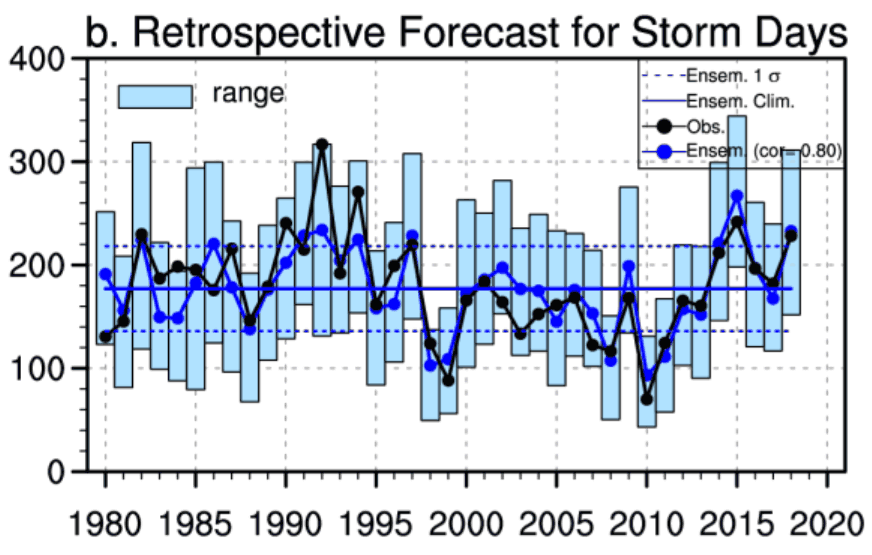November 4th, 2019
Key Finding
- The 2018 active tropical cyclone season in the North Pacific was successfully predicted five months in advance.
- The active season was primarily caused by warming in the subtropical Pacific associated with the positive phase of the Pacific Meridional Mode
- A secondary cause was the warming in the tropical Pacific associated with Central Pacific El Niño.
- The potential effect of anthropogenic forcing on the 2018 active storm season is uncertain.
Y. Qian, H. Murakami, M. Nakano, P.-C. Hsu, T.L. Delworth, S.B. Kapnick, V. Ramaswamy, T. Mochizuki, Y. Morioka, T. Doi, T. Kataoka, and K. Yoshida . Geophysical Research Letters. DOI: 10.1029/2019GL084566
The 2018 tropical cyclone (TC) season in the North Pacific was very active, with 39 tropical storms including 8 typhoons/hurricanes. Unlike the typical limitations in skill of seasonal predictions made before April initial forecasts, the active 2018 TC season was successfully predicted by the Geophysical Fluid Dynamic Laboratory Forecast-oriented Low Ocean Resolution (FLOR) global coupled model 3–5 months in advance (i.e., successful predictions from 1 February 2018).
The authors used a suite of idealized experiments with three dynamical global models to show that the active 2018 TC season was primarily caused by warming in the subtropical Pacific associated with the positive phase of the Pacific Meridional Mode, and secondarily by warming in the tropical Pacific associated with Central Pacific El Niño.
The potential effect of anthropogenic forcing on the active 2018 TC season was also investigated, using two global models. The models project opposite signs for future changes in TC frequency in the North Pacific, thereby highlighting the substantial uncertainty and model dependence in the possible impact of anthropogenic forcing on Pacific TC activity.
This work was made possible by bringing together an international team of scientists from three major modeling centers: the Geophysical Fluid Dynamics Laboratory from the U.S., Japan Agency for Marine-Earth Science and Technology, and Meteorological Research Institute from Japan.



